This blog is used strictly for educational purposes only. No copyright infringement intended.
Don't wanna be here? Send us removal request.
Text
How can crowdsourcing aid in battling the COVID-19 pandemic?
What is Crowdsourcing?
Crowdsourcing is a distributed online problem-solving and innovative sourcing paradigm where participants of online communities collaborate to accomplish a common objective (Vermicelli et al., 2020; Zhang et al., 2022). It supplements conventional data gathering by collecting massive amounts of data and information from individuals worldwide.
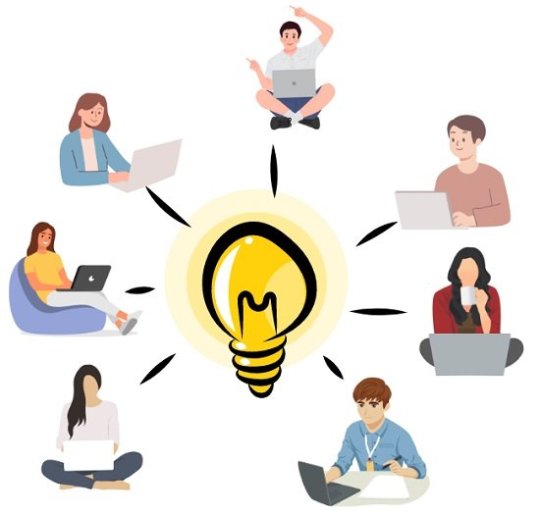
Crowdsourcing Initiatives for COVID-19 Pandemic
Crowdfight
An endeavour spearheaded by the scientific community with the intention of mobilizing all accessible resources to combat the COVID-19 pandemic (Vermicelli et al., 2020). It is designed for COVID-19 researchers who wish to submit a brief description of their inquiries or projects. The request may involve anything from a straightforward but time-consuming task (e.g., data transcription) to the resolution of a technical inquiry that exceeds their area of expertise or the establishment of a collaborative relationship. Further, another scientist within the community will try to comprehend and fulfill the demand.
Click for more info
COVID Near You
Created by Harvard Medical School and Boston Children's Hospital, which allows individuals to report symptoms in real-time by ZIP code (Zhang et al., 2022). Using crowdsourced data, it maps existing and future pandemic areas to help local, online communities and public health organizations track disease progression. Public reporting of COVID-19 signs may supplement public health monitoring and assist people in determining where symptoms are happening in their community (Fliesler, 2020).

Open Innovability - Call4Ideas COVID-19 Challenge
The crowdsourcing platform Open Innovability by Enel hosts the Call4Ideas COVID-19 Challenge, launched by Marzotto Venture Accelerator and Campus Bio-Medico University of Rome (Vermicelli et al., 2020, p. 186). This is an open invitation to everyone within the online communities who has innovative projects or ideas that could potentially turned into an entrepreneurial endeavour to assist the Italian system in responding to the COVID-19 pandemic. This challenge encompasses various areas, including medical and personal protective equipment, telemedicine and home care, diagnostics, therapy and post-therapy.
Click for more info
Types of Crowdsourcing
While there are four main types of crowdsourcing, this blog will specifically delve into one of them, which is crowdfunding (Cricelli et al., 2021).
Crowdfunding: Soliciting financial contributions and investments for charitable endeavours, initiatives, and entrepreneurial ventures, without the intention of providing monetary returns to the contributors (SendPulse, 2023).
Crowdfunding Campaigns for COVID-19
MaybankHeart-MERCY
The objective of the campaign was to generate financial resources for Mercy Malaysia's COVID-19 Strategic Preparedness and Response Plan which offers crucial assistance to Malaysia's healthcare system by providing medical supplies and other vital necessities (Maybank, 2020). Additionally, it aims to support frontliners and volunteers, who are actively combating the COVID-19 pandemic. Furthermore, it would furnish vital provisions and support to marginalized factions within the community, guaranteeing their access to aid throughout the MCO. In only two weeks, Maybank and Mercy Malaysia received almost RM300,000 for their ‘COVID-19 Pandemic Fund’ after public support. Donations are processed via the online banking platform Maybank2u.
Asnaf Care
Lembaga Zakat Negeri Kedah (LZNK) developed Asnaf Care, a virtual crowdfunding platform that was introduced on March 26, 2020, to raise money for asnaf (have-nots Muslim) in Negeri Kedah who suffered from the COVID-19 pandemic. Since 18 March 2020, Asnaf Care has asked the local and online communities to help distribute food to individuals experiencing food shortages under the Restriction Movement Order (Eldersevi & Muhammad, 2021).
Click for more info

Crowdsourcing Initiatives to Combat Infodemic during COVID-19 Pandemic
The proliferation of misinformation persisted without restraint on publicly accessible social media platforms such as Facebook. In Malaysia, Facebook, and Twitter have spread the misleading concepts that alkaline foods may treat COVID-19 (Yang, 2021). In response to the difficulties posed by the infodemic, crowdsourcing endeavours have prioritized the development of websites containing reliable data and information about COVID-19, with the backing of established fact-checking efforts.
CoronaTracker.com
CoronaTracker.com was established in late January 2020, during a period when widespread reports of COVID-19 compelled communities to attempt in comprehending the situation (Yang, 2021). Malaysian data scientist utilized LinkedIn, Facebook, and Telegram to recruit individuals from online communities to cooperate on pandemic remedies, receiving responses from across the globe. The site shows worldwide COVID-19 outbreak statistics, including reported cases, recovery, and fatalities in impacted nations.
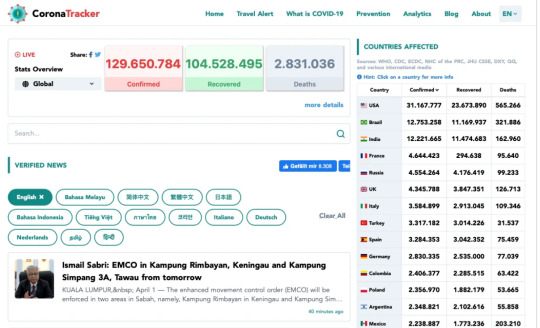
KawalCOVID19
KawalCOVID19 is another crowdsourcing initiative that adopts data-centric methodologies to provide precise and reliable information about COVID-19 in Indonesia (Yang, 2021). Its webpage has current information on confirmed cases, medication, recovery, and mortality. Notably, KawalCOVID19 reviews its portal content with medical community including doctors, virologists and epidemiologists to assure accuracy. Moreover, KawalCOVID19 provides links access to the authoritative sites of World Health Organization and official Indonesian government site. In an effort to counteract falsehoods associated with the pandemic, KawalCOVID19 and the Indonesian Anti-Slander Community (Mafindo) collectively gathered deceptive information from unidentified volunteers to verify its accuracy.
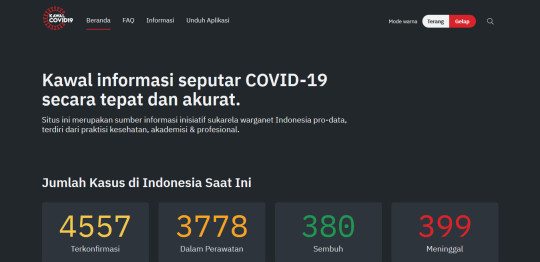

In conclusion, crowdsourcing has been shown to be a crucial asset in combating COVID-19 in physical and online communities, providing a wide range of viable alternatives. It facilitates the accumulation of real-time information and the development of innovative approaches by enabling global community collaboration through online crowdsourcing initiatives such as Crowdfight, COVID Near You and Open Innovability. Additionally, the ability of crowdfunding initiatives such as MaybankHeart-MERCY and Asnaf Care to amass financial backing for COVID-19 is underscored. Concurrently, crowdsourcing effectively negates misinformation through the provision of accurate information within online communities, as exemplified by initiatives such as KawalCOVID19 and CoronaTracker.com. Fundamentally, crowdsourcing manifests itself as a complex entity, capitalizing on collaborative endeavours to efficiently address the obstacles posed by COVID-19.

List of References
Cricelli, L., Grimaldi, M., & Vermicelli, S. (2021). Crowdsourcing and open innovation: a systematic literature review, an integrated framework and a research agenda. Review of Managerial Science, 16, 1269–1310. https://doi.org/10.1007/s11846-021-00482-9
Crowdfight. (n.d.). https://crowdfight.org/
Eldersevi, S., & Muhammad, M. (2021). Asnaf care: A case study of the Malaysian-based charity crowdfunding platform to combat the impact of COVID-19. Indonesian Conference of Zakat - Proceedings, 615-626. https://doi.org/https://doi.org/10.37706/iconz.2021.309
Enel. (2020). CALL4IDEAS COVID-19 challenge-campus bio-medico university of Rome and marzotto venture accelerator. https://openinnovability.enel.com/challenges/call/2020/4/call-4-ideas-covid-19-challenge
Fliesler, N. (2020, April 9). Crowdsourcing COVID-19. Harvard Medical School. https://hms.harvard.edu/news/crowdsourcing-covid-19
INCEIF. (2023). Asnaf care: A case study of the Malaysian-based charity crowdfunding platform to combat the impact of COVID-19. https://inceif.edu.my/2022/12/20/asnaf-care-a-case-study-of-the-malaysian-based-charity-crowdfunding-platform-to-combat-the-impact-of-covid-19/
Maybank. (2020). Generous donors raise over RM300,000 in MaybankHeart-MERCY crowdfunding campaign against COVID-19. https://www.maybank.com/en/news/2020/04/07.page
SendPulse. (2023). Crowdsourcing. https://sendpulse.com/support/glossary/crowdsourcing
Vermicelli, S., Cricelli, L., & Grimaldi, M. (2020). How can crowdsourcing help tackle the COVID‐19 pandemic? An explorative overview of innovative collaborative practices. R&D Management, 51(2), 183–194. https://doi.org/10.1111/radm.12443
Yang, J. (2021). Crowdsourcing during the infodemic: Technology and ground-up initiatives during COVID-19. Medium. https://medium.com/digital-asia-ii/crowdsourcing-during-the-infodemic-technology-and-ground-up-initiatives-during-covid-19-603e6d1fb792
Zhang, S. I., Meng, J., & Huang, R. (2022). Reporting COVID-19 via crowdsourcing: The US vs. China. In Xu, X. (Ed.), Coping with COVID-19, the mobile way (pp. 119-138). Springer. https://doi.org/10.1007/978-981-19-5787-1_6
6 notes
·
View notes
Text
Has the Covid-19 pandemic changed the public perception of gaming?
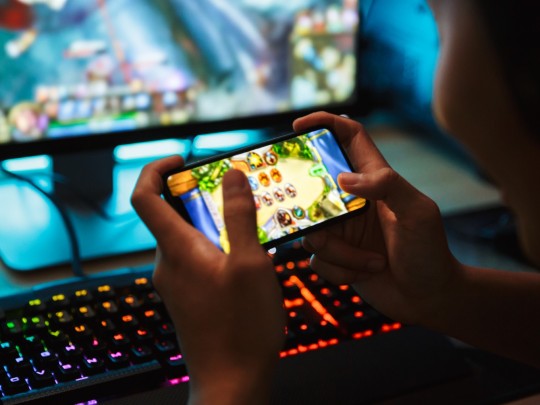
What is Gaming/Social Gaming?
Social gaming – online games designed to facilitate social interaction among individuals while playing (Gonçalves et al., 2023). There are numerous forms where games can be “social”, like commenting and observing other players. Moreover, gaming fosters community building both virtually and in real life. Significantly, the World Health Organization has supported the #PlayApartTogether campaign, which was initiated by the gaming sector to promote healthy online gaming behaviours, particularly emphasizing activities that foster social connection (Giardina et al., 2021).
The Public Perception of Gaming
Violence: Games can introduce youngsters to violence and boost their propensity for engaging in aggressive conduct.
Addiction: Games contain addictive qualities, and this is substantiated by study findings that excessive engagement with gaming may result in addiction (Freitas et al., 2019).
Social Isolation: This phenomenon arises due to the substantial time commitment associated with engaging in games, which therefore limits opportunities for face-to-face social interactions (Kabir, 2020).

Gaming During Covid-19 Pandemic
The prevalence of gaming has experienced a significant surge amidst the pandemic, attracting individuals who previously avoided it wholly or those who indulged in it only occasionally (Lufkin, 2020). It is also intriguing to observe the shift in perspective of the World Health Organization regarding online gaming, wherein they previously cautioned against its potentially hazardous and addictive nature but now extol its beneficial effects on social interaction (Kriz, 2020). Approximately 75% of participants reported having established meaningful friendships inside the gaming environment since online gaming provides a platform for individuals to express themselves in manners that they may find challenging to do in offline settings due to factors like physical appearance, gender, sexual orientation, or age (Griffiths, 2020). A noteworthy study reveals that 63% of gamers engage in cooperative gaming, with a considerable number of players deriving social assistance from the communities they participate in.
So, does the COVID-19 Pandemic Change the Public Perception of Gaming?

We will delve into this topic by examining the following examples:
Animal Crossing (Click for more)
The game Animal Crossing has gained popularity as a substitute for social connection during lockdowns and as an online venue for weddings and celebrations (Lufkin, 2020). For instance, players may tour the villages of peers they know in actual life or random people they met online by sharing their village code. Besides, certain players have opted to celebrate their birthdays in Animal Crossing, and some engage in virtual dating experiences. Certain couples who were compelled to postpone their wedding ceremonies due to the pandemic have resorted to exchanging vows in Animal Crossing. Additionally, there is an online fan-created marketplace called Nookazon, which facilitates the exchange of fruits and furnishings among players. Nookazon will organize quiz events and interactive conversation sessions for Animal Crossing players. Animal Crossing, specifically, offers a tranquil kind of escapism and a sense of calm during these tumultuous periods, hence attracting new individuals to engage in the gaming pastime (Lufkin, 2020).
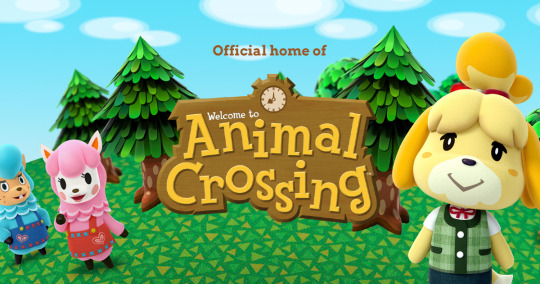
Among Us (Click to play)
Among Us with 100 million downloads created by InnerSloth, amassed tremendous traction amid the COVID-19 crisis owing to its focus on social engagement and collaboration (Lufkin, 2020). The social dimension of the game is embodied in its communication structures, which require players to employ deductive thinking, trust, and suspicion to identify impostors via text or voice conversation. Collaboration and social interaction are fostered within the game through player engagement in task completion, observation of suspicious behaviour, and deliberation regarding potential impostors. Certain individuals utilize Discord servers during gameplay, enabling them to converse and even shout at one another, as opposed to relying on the game’s default chatting function (Sodhi, 2020). Some individuals expressed gratitude for the game because it allowed them to stay in touch with others, while some played it with their families (Ottesen, 2021).

Twitch (Click to watch)
Twitch, an online platform that facilitates live streaming of gameplay and real-time conversation between viewers and streamers, amassed 5 billion hours of content views in the second half of 2020 (Lufkin, 2020). Twitch has witnessed the formation of novel gaming communities, such as the LGBTQ community and military community. In 2015, Jay-Ann Lopez (London gamer), established a private Facebook group named Black Girl Gamers to create a secure and all-encompassing environment in response to the prevalent issues of racism and sexism within the gaming community. She then successfully cultivated a thriving community that has expanded to several platforms, including Twitch (Lufkin, 2020). Lopez emphasizes the beneficial influence of games in preserving social bonds and community spirit throughout the pandemic, notwithstanding initial doubts and stigmatization of gamers as “strange”.

In my opinion, COVID-19 pandemic changed the public perception of gaming. Animal Crossing and Among Us emerged as unforeseen places for social engagement during periods of restricted physical gatherings by enabling the organization of online festivities and weddings, which served as means to maintain connections. Besides, LGBTQ, military, and Black Girl Gamers communities grew on Twitch, thus showcasing how gaming helped sustain social connections. Overall, games were a significant tool for building community and social connection during the pandemic, dispelling misconceptions about gaming as a violent, addictive, and socially isolated activity.
List of References
Among us. (2023). https://amongusplay.online/
Freitas, B. D. A., Contreras-Espinosa, R. S., & Correia, P. Á. P. (2019). How society’s negative view of videogames can discourage brands from sponsoring eSports. In Zagalo, N., Veloso, A. I., Costa, L., & Mealha, Ó. (Eds.), Communications in computer and information science (pp. 136-149). Springer. https://doi.org/10.1007/978-3-030-37983-4_11
Giardina, A., Di Blasi, M., Schimmenti, A., King, D. L., Starcevic, V., & Billieux, J. (2021). Online gaming and prolonged self-isolation: Evidence from Italian gamers during the Covid-19 outbreak. Clinical Neuropsychiatry, 18(1), 65–74. https://doi.org/10.36131/cnfioritieditore20210106
Gonçalves, D., Pais, P., Gerling, K., Guerreiro, T., & Rodrigues, A. (2023). Social gaming: A systematic review. Computers in Human Behavior, 147, 1-31. https://doi.org/10.1016/j.chb.2023.107851
Griffiths, M. (2020, March 24). Coronavirus: making friends through online video games. The Conversation. https://theconversation.com/coronavirus-making-friends-through-online-video-games-134459
Kabir, L. (2020, July 21). 10 Negative effects of video games. Healthy Gamer. https://www.healthygamer.gg/blog/10-negative-effects-of-video-games
Kriz, W. C. (2020). Gaming in the time of COVID-19. Simulation & Gaming, 51(4), 403–410. https://doi.org/10.1177/1046878120931602
Lufkin, B. (2020, December 16). How online gaming has become a social lifeline. BBC. https://www.bbc.com/worklife/article/20201214-why-indias-competitive-testing-treadmill-never-stops
Nintendo. (2023). Animal crossing. https://animalcrossing.nintendo.com/
Ottesen, K. K. (2021, March 9). ‘Among Us’ proved to be the game we needed during the pandemic. The Washington Post. https://www.washingtonpost.com/lifestyle/magazine/the-game-among-us-proved-to-be-the-game-we-needed-during-the-pandemic/2021/03/04/0addd71a-64cf-11eb-8c64-9595888caa15_story.html
Sodhi, T. (2020, September 25). How Among Us found success in connecting people during a pandemic. Gadgets 360. https://www.gadgets360.com/games/features/among-us-innersloth-internet-game-multi-player-online-discord-twitch-youtube-pandemic-connections-2301149
Twitch. (2023). https://www.twitch.tv/
4 notes
·
View notes
Text
What is Fandom?
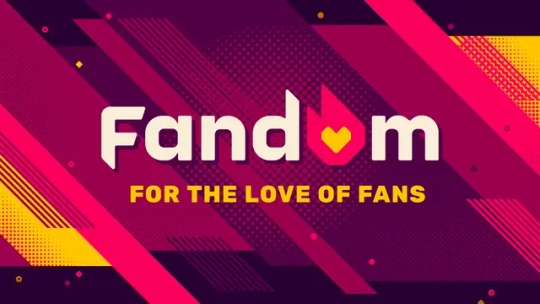
A fandom is a community of fans who possess a mutual interest in a particular subject matter, including music, sports, video games, TV shows, and more. Fandom is unquestionably based on personal interactions that are frequently strengthened by involvement in social activities (Cooper, 2014). Currently, fandom has emerged as a very powerful and globally pervasive phenomenon. Fans can communicate on social media platforms like Facebook and Twitter, which further enables them to build vibrant online communities (Smutradontri & Gadavanij, 2020; Sandi & Triastuti, 2020).
Do toxic fans in some online spaces (e.g. Twitter) make it difficult to become or identify as a fan?
Toxic Fans - fans who engage in behaviours that are seen as improper and disagreeable (Taylor, 2023).
This blog will explore how toxic behaviours, like gatekeeping and cyberbullying, within online spaces may erect substantial obstacles in the way of those who want to become fans or who want to identify publicly as such.
Toxic Behaviour: Gatekeeping

One notable characteristic seen in fandoms is the manifestation of gatekeeping behaviour shown by some toxic fans. Gatekeeping involves the establishment of subjective regulations or criteria that determine one’s status as an authentic fan. This conduct may take many forms, such as testing new fans’ familiarity with a certain property or making fun of and demeaning the fans who do not fit the fanbase’s expectations (Kat, n.d.).
As celebrities like Megan Thee Stallion openly showed interest in anime after taking home three Grammys at the 63rd annual Grammy Awards, the anime community faced gatekeeping. Notwithstanding Stallion’s outspoken devotion to anime and prior partnerships, anime streaming service Crunchyroll supported her on social media. Yet a lot of gatekeepers voiced their disapproval, protesting about how anime was becoming more progressive, that the character she cosplayed was not in Black, and that Stallion was not regarded seriously as a true anime enthusiast (Trinidad, 2021).
Moreover, Kim Kardashian earlier presented her passion for anime when she dyed her hair pink, drawing inspiration from Zero Two in the anime “Darling in the Franxx”. She also encountered a good number of gatekeeper anime enthusiasts who thought she did not meet their standards and would destroy the anime scene (Trinidad, 2021).

Gatekeeping transcends individuals’ personal inclinations regarding the fandoms in which they participate. In addition to being critical, superfluous, and impolite, these remarks were discriminatory in nature because they ascribed a particular complexion to cosplayers within the anime community.
Gatekeeping is used as a means to establish authority and exclusivity inside the community. Therefore, this practice can discourage new fans from engaging or publicly declaring their position as fans (Alexander, 2022). Consequently, this phenomenon may provide difficulties for those who are new to a certain hobby, since they may encounter obstacles in gaining acceptance or recognition within the particular community.
Toxic Behaviour: Cyberbullying
Cyberbullying is a common occurrence in toxic fandoms and is one of its most harmful features.
The release of “The Last Jedi” was accompanied by a notable presence of toxic behaviour among the Star Wars fandom. Kelly Marie Tran, the actress renowned for her portrayal of the character Rose Tico, was subjected to instances of racist and sexist harassment, which ultimately led to her decision to disengage from various social media sites (Taylor, 2023).

Even those who have opposing viewpoints, question long-held beliefs, or merely belong to underrepresented groups run the risk of being the subject of unrelenting online harassment. If a prospective fan’s viewpoints diverge from those of the fandom’s leading speakers, they may fear rejection or mockery. They may be reluctant to publicly show their admiration or interest in the topic because of the concern of being unfit. This behaviour not only pushes away prospective new followers but also has the ability to scare away current fans, who may begin to feel unsafe or uncomfortable in an environment that they previously liked.
Fan identification is an influential means of self-expression, but the toxic fandom environment can make this process susceptible. Some people may feel that embracing a fandom entails taking a chance of having potential cyberbullying, which may cause them to restrict themselves and be reluctant to interact with others within communities. This can eventually impede the pursuit and expression of personal interests as a fan.
In conclusion, it is indisputable that the presence of toxic fan culture inside online platforms may create difficulties for individuals in fully embracing or identifying themselves as fans. The presence of toxic behaviours, such as gatekeeping, and cyberbullying, has the potential to create an inhospitable atmosphere for both new fans and existing fans. These behaviours, such as the deliberate exclusion of persons with divergent perspectives, might provide challenges for new fans seeking to assimilate into the group or openly demonstrate their enthusiasm for a certain fandom.
List of References
Alexander, I. A. (2022). Gatekeeping in fandoms is nuanced & complicated! Fans that do it often are wary of control freaks, while other less savory fans gatekeep with malicious intent!. https://omnigeekempire.com/2022/01/06/gatekeeping-in-fandoms-is-nuanced-complicated-fans-that-do-it-often-are-wary-of-control-freaks-while-other-less-savory-fans-gatekeep-with-malicious-intent/
Cooper, B. L. (2014). Understanding fandom: An introduction to the study of media fan culture. Popular Music and Society, 38(1), 109–111. https://doi.org/10.1080/03007766.2014.908524
Kat. (n.d.). Examining fandoms: Gatekeeping & labeling. https://xanister.wordpress.com/2018/11/24/examining-fandoms-gatekeeping-labeling/
Sandi, Z. A., & Triastuti, E. (2020). Fandom as a reward industry in Indonesia: Pleasures in pop music fan engagement and participation within online social networking. SEARCH Journal of Media and Communication Research, 12(2), 73–89. https://scholar.ui.ac.id/en/publications/fandom-as-a-reward-industry-in-indonesia-pleasures-in-pop-music-f
Smutradontri, P., & Gadavanij, S. (2020). Fandom and identity construction: An analysis of Thai fans’ engagement with Twitter. Humanities and Social Sciences Communications, 7(1), 1-13. https://doi.org/10.1057/s41599-020-00653-1
Taylor, V. (2023, February 1). Toxic fandom: What is it?. Medium. https://medium.com/change-becomes-you/toxic-fandom-what-is-it-c8c1520beb06#:~:text=In%20recent%20years%2C%20journalists%2C%20news,seen%20as%20inappropriate%20and%20unpleasant.
Trinidad, N. (2021). Exclusivity within fandoms creates a toxic environment. https://dailytitan.com/opinion/exclusivity-within-fandoms-creates-a-toxic-environment/article_f6a7c2d4-8d09-11eb-918c-9331db53d0ff.htm
6 notes
·
View notes
Text
Is social media useful in spreading information on Covid-19 in Malaysia?

Covid-19 is claimed to have originated in Wuhan, China, in late December 2019 and ultimately expanded to 200 nations globally (Salman, 2021). Social media, with over billion users, is vital for Malaysia’s government to spread Covid-19 awareness timely and educate the public on precautionary conduct. Social media enables people to generate and share information while socializing, enabling the flow of opinions, notions, and insights in online communities (Hussin et al., 2021). Governmental initiatives to enhance public health via social media have sprouted in the last several years (Dawi et al., 2021).
Navigating the Pandemic Wave: How Social Media Amplified COVID-19 Response in Malaysia
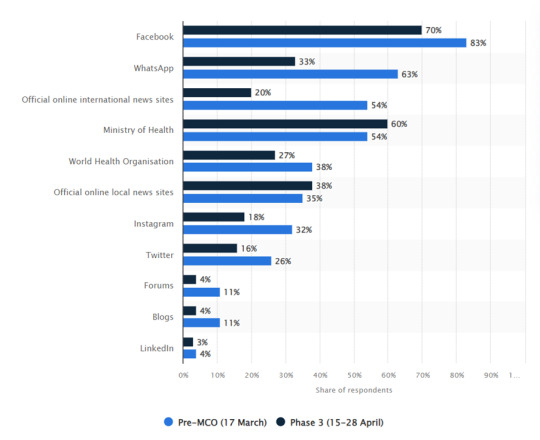
Malaysian citizens have access to Covid-19 updates through social media, including the official Facebook page, YouTube channel, and Twitter account of the Ministry of Health Malaysia, known as “Kementerian Kesihatan Malaysia (KKM)”. Besides, the Director-General of Health live-streams Covid-19 information on Facebook (Hussin et al., 2021). Notably, the Malaysian Ministry of Health and National Security Council reported Covid-19 cases on Facebook, WhatsApp, Telegram, and Twitter when Covid-19 initially affected Malaysia. This move was made because social media can approach individuals quickly with crucial information and updates.


Twitter represents one of the social media channels that the Malaysian government has selected in providing updates on the Covid-19 situation to alert people about maintaining good hygiene practices to prevent the spread of the virus and to share dos and don'ts during the outbreak (Hussin et al., 2021). It was overwhelming when users gave input, participated in online conversations, commented on status or live video broadcasting, tweeted the news, and shared within communities. Public questions, complaints, and misunderstandings can be published on government official pages for speedy replies. Social media content can change people's behavior and reduce the efficacy of government remedies. The Malaysian Ministry of Health (MOH) tweeted Covid-19 information, covering daily cases, deaths, new patients, discharges, hospitalization, and verified cases to caution the citizens (Hussin et al., 2021). Roughly 20 posts on SOP reminded Twitter users of SOPs such as business operations, purchasing processes, or social events daily. Additionally, MOH published 164 Covid-19 instructions and precautions. For instance, postings mentioned the red zone, where numerous cases were found, and special precautions. Notably, hashtags are frequently included to prioritize Covid-19 information from reliable organizations to make it easy for individuals for browsing later.

Empowering Malaysia’s COVID-19 Response: MySejahtera
In April 2020, the government launched the MySejahtera mobile application to assist individuals in tracking their health status and registering their locations, allowing authorities to collect timely information in fighting Covid-19 which had a positive impact on people's inclination to be involved in protective behaviours (Dawi et al., 2021). Public health guidelines were more probable to be followed when citizens realized the scenario and government response. The COVID-19 epidemic is updated daily by MySejahtera. For instance, this includes the cumulative confirmed cases and the daily new cases.

Dangers of Social Media Reliance during the COVID-19 Pandemic
Dissemination of False Information
Social media during the Covid-19 epidemic has enabled a rapid dissemination of unverified content, potentially deceiving and perplexing a considerable segment of the public. This encompasses misinformation about drinking warm salts or lemon water and taking hydroxychloroquine for curation (Balakrishnan, 2022). In Malaysia, a notable occurrence was the rise in the dissemination of false information pertaining to the lockdown measures and Covid-19-related information. This surge prompted Malaysian government to establish the Rapid Response Troop as a means to combat the proliferation of fake news, namely sebanarnya.my. Several instances of false information being spread in the country can be observed, such as the circulation of a compilation of locations within the Klang Valley that purportedly have a significant concentration of Covid-19 cases (Balakrishnan, 2022). Relying extensively on social media might increase dread, dissatisfaction, anxiety, and paranoia. Disinformation was spread in Malaysia by locals using fake or anonymous accounts (Salman, 2021). Many people detect deceptive information poorly, particularly on social media. Following the MCO's adoption, people panic-purchase and buy vast amounts of items and non-essentials at supermarkets (Ngadiron et al., 2021).
Disseminating false information is akin to spreading the Covid-19 virus. The battle against fake information persists, and the community requires daily education via diverse platforms. Social media platforms have a significant impact on fostering societal awareness and enhancing interpersonal connections within Malaysian communities. However, individuals should be cautious, as the proliferation of fabricated information on these platforms is intended to captivate netizens and generate sensationalized or trending discussions.
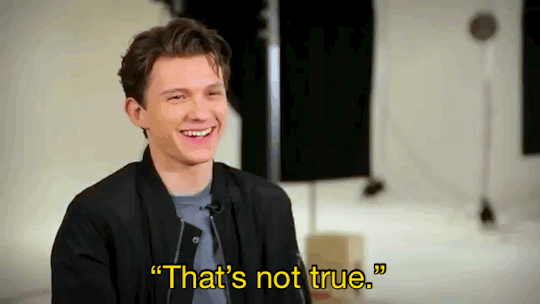
In my opinion, social media is useful in spreading essential COVID-19 information in Malaysia. It enables the government to swiftly provide updates, guidance, and safeguards to Malaysians. The MySejahtera mobile app, Facebook, and Twitter have allowed direct interaction with individuals, encouraging safety and behavioural alterations. Nevertheless, fighting disinformation is vital. Overall, social media is useful, but it demands careful scrutiny to guarantee information authentication.
List of References
Balakrishnan, V. (2022). COVID-19 and fake news dissemination among Malaysians – motives and its sociodemographic correlates. International Journal of Disaster Risk Reduction, 73, 1-8. https://doi.org/10.1016/j.ijdrr.2022.102900
Dawi, N. M., Namazi, H., Hwang, H. J., Ismail, S., Maresova, P., & Krejcar, O. (2021). Attitude toward protective behavior engagement during COVID-19 pandemic in Malaysia: The role of e-government and social media. Frontiers in Public Health, 9, 1-8. https://doi.org/10.3389/fpubh.2021.609716
Hussin, R., Rahman, S. H. A., & Azudin, N. (2021). Social media approach to crisis communication during COVID-19 pandemic: An analysis from Malaysian perspective. Ulum Islamiyyah, 33(S5), 77–88. https://doi.org/10.33102/uij.vol33nos5.404
Ngadiron, S., Aziz, A. A., & Mohamed, S. S. (2021). The spread of COVID-19 fake news on social media and its impact among Malaysians. International Journal of Law, Government and Communication, 6(22), 253–260. https://doi.org/10.35631/ijlgc.6220024
Salman, A. (2021). Knowledge, curiosity, communication channels and panic during COVID-19 movement control order. International Journal of Media and Communication Research (IJMCR), 2(1), 1–11. https://doi.org/10.25299/ijmcr.v2i1.6205
Statista. (2022). Distribution of main news sources during MCO COVID-19 Malaysia 2020. https://www.statista.com/statistics/1118979/malaysia-main-news-sources-during-covid-19/
6 notes
·
View notes
Text
Is blogging still relevant in the age of TikTok and Instagram?
What is Blog?
A programmer called Peter Merholz abbreviated the term “weblog” to “blog” in 1999 (Goldstein, 2009).A blog is similar to an online journal or diary where bloggers can express their ideas, views, and emotions throughout time. However, blogs can sometimes seen as contentious. There are several blogging platforms like Tumblr, and Medium. It is simple to build and maintain a blog. Once registered, bloggers can begin to write any content. Bloggers can add links, GIFs, and images to improve their blog’s quality.
In my perspective, blogging is still important in the era of TikTok and Instagram and will keep on being a vital component of social media today, with distinct roles in fostering sociality and community-building. To figure this out, it is crucial to explore the nuances of Blogging, TikTok, and Instagram.
Blogs give writers the opportunity to dive deeply into topics, add context, and present complex opinions (Indeed Editorial Team, 2023). Additionally, blogs may be searched and archived, which makes them useful as databases of information on certain topics.
TikTok enables users to view, create, and share videos online (D’Souza, 2023). According to Al-Maroof et al. (2021), TikTok has become a popular application with a micro-video function.
Instagram’s popularity has skyrocketed, and it has 1 billion active users per month, which enables users to upload photos and videos (Faelens et al., 2021).
Blog: Nurturing Digital Communities, Promoting Sociality in Public Sphere
Blogs can help foster the growth of digital communities. On the other hand, individuals can utilize blogs to position themselves as an authority in their particular fields. They enable knowledge and ideas exchange, which helps build a loyal readership. Blogs can also build online communities centered on particular topics or pastimes where participants converse and argue, contributing to the public sphere in their particular fields. Additionally, commenting on blogs enables readers to participate in conversations and interact with bloggers and other readers. TikTok and Instagram also promote sociality, yet in distinct methods, as they prioritize immediate interactions. For example, uploading short video clips and images, which is more to keep users’ attention. In short, TikTok and Instagram may be ephemeral, but the notion of a blogging community may be more profound and involved (Yessenova, 2016).
Besides, blogging creates networked publics around mutual passions and conversations. These networked publics were frequently dispersed and facilitated in-depth discussions. The fast-paced structure of short-form content also builds networked publics on TikTok and Instagram; however, the interactions are fragmentary and transitory (Liu et al., 2022).

Blogging in Political Sphere
A blog can garner attention and have a significant impact on people when it deals with hot-button political topics. The political parties have extensively exploited blogs and social media platforms in their schemes and initiatives since the first strategically focused political blog, Howard Dean’s ‘Blog for America’ was built in 2003 (Villar et al., 2017). A blog’s ability to impact political participation will increase with how valuable it is seen. Furthermore, blog content can be easy to search throughout time (Morris, 2023). They have an enduring online presence. In contrast, content posted on TikTok and Instagram may be ephemeral and more difficult to find when it vanishes from a user’s stream.

Emotional Resonance in Blogging
A blog frequently serves as a kind of public journal, collecting unfiltered feelings and comprehensive narration. Longer-form emotional expression enables more in-depth contemplation and understanding. This can be called as “Emotional Resonance”. The expression of emotions in blogs may make it easier to enter social networks by spurring more comments and similar sentiments from blog audiences, which is a step toward connection and understanding (Hine et al., 2019). Since TikTok and Instagram place an emphasis on visual, brief content that appeals to immediate viewing habits, it may be more difficult to establish a deeper feeling of connection with readers on these platforms. When compared to more extensive, more complicated blog postings, this structure may restrict how deeply and intricately emotions are expressed. Although a TikTok video or an Instagram story may have an instant effect, blog pieces consistently have more lasting value and reverberation. In addition, blogs are designed to hear varied views. TikTok and Instagram’s algorithms could generate echo chambers that favour particular content. (Altered State, 2023). Consequently, there will be group polarization and misunderstanding.

In my perspective, blogging is still relevant in the age of TikTok and Instagram, particularly for community-building, participation in the political sphere, and emotional resonance. Hence, the practice of blogging should remain relevant in the ever-evolving digital environment due to its long tradition of in-depth information.
List of References
Al-Maroof, R. S., Ayoubi, K., Alhumaid, K., Aburayya, A., Alshurideh, M. T., Alfaisal, R., & Salloum, S. A. (2021). The acceptance of social media video for knowledge acquisition, sharing and application: a com-parative study among YouTube users and TikTok users’ for medical purposes. International Journal of Data and Network Science, 197–214. https://doi.org/10.5267/j.ijdns.2021.6.013
Altered State. (2023). TikTok's algorithm: the dark side of viral trends and echo chambers. https://www.alteredstateprod.com/post/tiktok-algorithm#:~:text=be%20in%20jeopardy.-,Echo%20Chambers,their%20existing%20views%20and%20opinions.
D’Souza, D. (2023). TikTok: what it is, how it works, and why it’s popular. https://www.investopedia.com/what-is-tiktok-4588933
Faelens, L., Hoorelbeke, K., Cambier, R., Van Put, J., Van De Putte, E., De Raedt, R., & Koster, E. H. W. (2021). The relationship between Instagram use and indicators of mental health: a systematic review. Computers in Human Behavior Reports, 4, 100121. https://doi.org/10.1016/j.chbr.2021.100121
Goldstein, A. (2009). Blogging evolution. Evolution: Education and Outreach, 2(3), 548–559. https://doi.org/10.1007/s12052-009-0149-9
Hine, M. J., Nardon, L., & Gulanowski, D. (2019). The role of emotional expression in accessing social networks: the case of newcomers’ blogs. Journal of International Technology and Information Management, 28(1), 29–51. https://doi.org/10.58729/1941-6679.1393
Indeed Editorial Team. (2023). What is blogging? (with definition, advantages and tips). https://in.indeed.com/career-advice/career-development/what-is-blogging
Liu, X., Wu, J., & Zhao, B. (2022). Research on the impact of content fragmentation propagation in short videos —— a case study of Douyin. Advances in Social Science, Education and Humanities Research, 631, 231-236. https://www.atlantis-press.com/article/125968723.pdf
Morris, E. (2023). Is blogging still relevant in 2023? hell yeah! here’s 5 reasons why….https://www.linkedin.com/pulse/blogging-still-relevant-2023-hell-yeah-heres-5-reasons-emma-morris
Singla, A. (2023). Is blogging still worth it in 2023? (7 questions answered!). https://masterblogging.com/is-blogging-still-worth-it/#:~:text=I%20Do%20It%3F-,Is%20Blogging%20Still%20a%20Thing%20in%202023%3F,profitable%20for%20many%20more%20years
Villar, J. M. S., Bigné, E., & Manzano, J. A. (2017). Blog influence and political activism: an emerging and integrative model. Spanish Journal of Marketing - ESIC, 21(2), 102–116. https://doi.org/10.1016/j.sjme.2017.02.002
Yessenova, A. (2016). Benefits of blogging. NUGSE Research In Education, 1(1), 28-31. https://www.researchgate.net/publication/331199389_Benefits_of_blogging_editorial?enrichId=rgreq-a061863184361cbecbfd29a8cd23123e-XXX&enrichSource=Y292ZXJQYWdlOzMzMTE5OTM4OTtBUzo3Mjc5NzU4OTcwOTYxOTNAMTU1MDU3NDM4NzYxOQ%3D%3D&el=1_x_2&_esc=publicationCoverPdf
12 notes
·
View notes